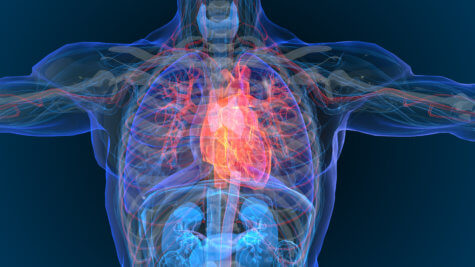LONDON — Heart attacks can happen without warning and increase one’s risk for heart failure. Researchers at King’s College London may have figured out how to predict and potentially prevent a heart from stopping.
Their mouse study findings point to a group of proteins important in preserving heart function after a heart attack.
“Heart failure continues to have a devastating impact on public health and, despite the remarkable efforts in disease management, the long-term prognosis remains poor,” explains Richard Francis the chief executive officer of Forcefield Therapeutics, the company that provided the technology for the study, in a release.
The condition is one of the leading causes of death and disability worldwide, affecting nearly 64 million people. Heart failure after a heart attack is caused by an irreversible loss of heart cells—unlike most cells in the body, heart cells do not divide and regrow. There is no cure or treatment for heart failure.
“This is the very first time that potentially curative factors for the heart are directly identified for their therapeutic potential,” says Professor Mauro Giacca, a professor of cardiovascular sciences at King’s College London and coauthor of the study.

The preventative measure involves looking for proteins that can protect heart cells against sudden cell death that’s often associated with a heart attack. The technology is called “FunSel” and pioneered by Forcefield Therapeutics. It works as a “search engine” for a library of human proteins, scanning across 1,000 proteins and identifying those with therapeutic potential.
FunSel narrowed the options from 1,000 to three—Chrdl1, Fam3c, and Fam3b. All three proteins have shown evidence of preventing cardiac damage in mice after a heart attack and preserving future heart function.
“Any of the three proteins we have identified can be administered immediately after a heart attack to minimize cardiac damage and thus prevent heart failure,” says Giacca. “There has been no significant development in this field for a long time, so we are very excited by this discovery.”
“This is early-stage data but if the results we have seen in mice are borne out in human trials, the potential for this therapeutic is extremely significant and could revolutionize treatments for patients at risk of heart failure,” adds Ajay Shah, a professor and director of the British Heart Foundation Centre for Research Excellence at King’s College London. “There are no effective protective therapeutics to prevent the typically rapid deterioration of heart tissue in the aftermath of a [myocardial infarction] so this is a major breakthrough in this field.”
The study is published in Science Translational Medicine.
